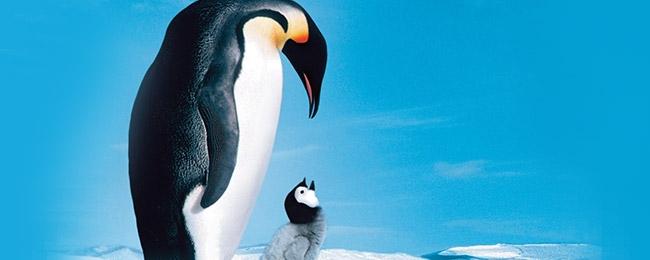March of the Penguins: Water Birds with Inspiring Spirit
Depicting a year in the life of the wonderful emperor penguins, this film was taken on location where the penguins live in Antarctica near Adelie Land’s Dumont d’Urville. The March of the Penguins is a French film of 2005, shot by two adventurous men, Laurent Chalet along with Jerome Maison who spent a year’s time with the emperor penguins.
The narration is rendered in English. While the film attracted my attention because of the delightful penguins as its subject, the documentary shows the life penguins live. I was led to feel sadness for the harsh realities of their life while being inspired by the penguins’ courageous and determined spirit.
March of the Penguins is completely about one year in the penguins’ journey of life. The lifecycle brings them out of the ocean where they are most adapted and onto the frozen ground to produce a chick. The long vigil over the egg and chick by the father penguin is inspiring.
This film is a reality film and is realistic enough to bring a cold chill down people’s spine as they see those long hours with the penguins huddling for warmth and trudging around on the ice. The National Geographic Society co-produced the documentary with Bonne Pioche. Luc Jacquet was the director and co-writer.
Emperor Penguins
The emperor penguins are among the most beautiful penguins on the planet. The largest in size and weight of any other species of penguin, these magnificent birds can weigh up to one hundred pounds and stand to almost fifty inches tall. In the film, these penguins seem larger than life. They have black and charcoal backs, wing flippers and even black faces and feet. A thin, pinkish-red line marks their beak and bright yellow spots are over the ears. Their chests, stomachs and short legs are whitish.
The Mating Couple
March of the Penguins shows the family closeness and loyalties of the penguins. A male and female emperor penguin mate for life. Each year they work together to produce one offspring. The mother has the first responsibilities of producing the egg, but she must have food after the effort to deliver the egg. The father is right there to take over the egg’s protection and nurturing.
The film shows the affection the two birds show for each other and the care they take not to leave the egg exposed to the sub-zero temperatures. The egg is cradled on their feet under extra layers of their soft, downy underside. The father cares longest for the chick, but the mother returns so he can go find food.
When the older chicks get separated from their parents they are vulnerable, but amazingly the parents can distinguish their call above all the other crying chicks. The parents are diligent to avoid tragedy for their offspring.
Dangers Penguins Face
I was impressed with the danger after danger that the penguins must face as shown in the March of the Penguins. In the water, they must be careful of the sea lions who are skilled hunters. On land, the elements are against them, but they band together against the cold and predators. Then, birds of prey like the skuas try to steal away the chicks for a meal.
A Fabulous Reality Nature Film
I was truly awe-inspired by the determined spirit of survival these creatures have. They seem exuberantly fun-loving as they play and hunt fish in the water, but they do not lead care-free lives. Their existence is filled with hazards and still they band together with the group and maintain a strong family bond between mates and the offspring.



